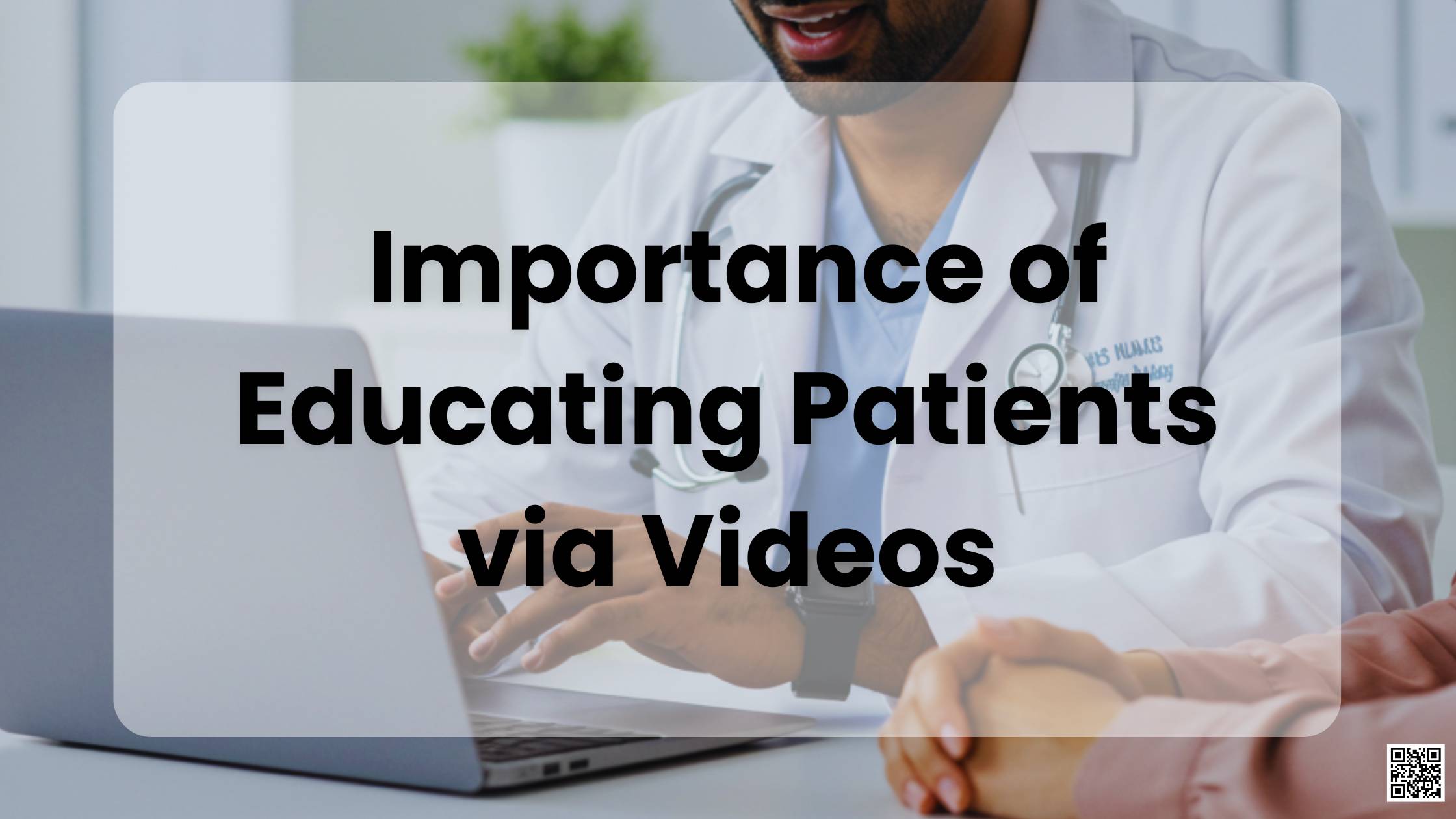In modern healthcare, effective communication is essential for improving patient outcomes. As medical information can often be complex, videos offer a clear and engaging way to educate patients. Whether explaining diagnoses, treatment options, or self-care routines, video content simplifies the learning process and caters to different literacy levels. It helps patients better understand their conditions and follow medical advice with greater confidence.
With increasing access to smartphones and the internet, videos have become a convenient and accessible educational tool. Patients can watch instructions anytime, revisit them as needed, and even share them with caregivers. This not only reduces misunderstandings but also minimizes repetitive consultations. As a result, healthcare providers can improve efficiency while ensuring that patients stay informed and empowered throughout their care journey.

Simplifies Complex Medical Information
Medical terms and treatment procedures can be confusing for many patients, especially those without a healthcare background. Educational videos simplify these complexities by using visual elements, animations, and plain language to explain conditions, diagnoses, or surgical steps. This helps patients grasp essential concepts more easily than with printed brochures or verbal explanations alone, improving overall understanding.
By breaking down complicated topics into digestible video segments, healthcare providers can make learning more interactive and accessible. These videos can demonstrate how medications work, what to expect before and after surgery, or how to manage chronic illnesses at home. As a result, patients are more likely to retain information and feel empowered to take an active role in their care.
Enhances Patient Engagement and Recall
Videos are a powerful medium to increase patient engagement by capturing attention and making health information more relatable. Compared to printed materials, videos stimulate both visual and auditory senses, helping patients stay focused and interested. This multi-sensory approach encourages active participation, which is essential for understanding complex medical topics.
Engaging video content also improves recall by reinforcing key messages through repetition and storytelling. Patients are more likely to remember instructions, medication routines, or lifestyle changes when the information is delivered in a visual, easy-to-understand format. This leads to better compliance and more positive health outcomes.
Offers Accessible and On-Demand Learning
One of the biggest advantages of video education is its accessibility. Patients can watch videos anytime and anywhere, whether at home, in a waiting room, or on the go. This flexibility allows individuals to learn at their own pace, revisit content as needed, and involve family members or caregivers in the learning process. On-demand access makes it easier for patients to absorb critical health information without feeling rushed or overwhelmed.
Educational videos also eliminate the need for repeated in-person explanations, saving time for both healthcare providers and patients. Instructions for medication, wound care, or post-surgical recovery can be delivered consistently through video, ensuring nothing is missed. This approach supports continuous learning and reinforces vital information between appointments, ultimately leading to better patient adherence and outcomes.
Speeds Up Content Creation with AI Video Generators
Creating patient education videos traditionally required time, equipment, and technical skills. Today, AI video generators make the process faster and more efficient. These tools allow healthcare professionals to convert text-based content into engaging videos using ready-made voiceovers, and visual elements. This helps clinics produce consistent and professional content without relying on expensive production teams.
With platforms like invideo AI, even non-experts can create high-quality videos tailored to different medical topics. These AI-powered tools speed up content creation while maintaining clarity and accuracy. This allows healthcare providers to focus more on care delivery while ensuring patients have easy access to informative and personalized videos.
Builds Trust and Improves Patient Satisfaction
Educational videos play a key role in building trust between healthcare providers and patients. When information is presented clearly and visually, patients feel more informed and confident in their care decisions. Seeing medical professionals explain conditions or procedures in a video adds a human touch, creating a sense of connection and transparency.
This clarity and personal approach contribute to higher patient satisfaction. When individuals understand their diagnosis, treatment plan, and next steps, they are more likely to follow instructions and have a positive care experience. Video content ensures consistent messaging, reducing confusion and enhancing overall trust in the healthcare provider.
Promotes Health Education on Social Media with AI Video Apps
AI video apps make it easier for healthcare providers to share informative content across popular social media platforms. These tools can quickly transform health tips, FAQs, or awareness messages into short, engaging videos ideal for Instagram, Facebook, or YouTube. With built-in editing features, and automatic captions, even non-technical users can create high-quality content.
Using AI video apps for social media helps increase reach and visibility among diverse patient groups. Bite-sized videos on topics like preventive care or wellness tips are more likely to be viewed and shared, making them a powerful tool for digital health education. This approach boosts community engagement while positioning providers as reliable sources of trustworthy medical information.
Conclusion
Educating patients through videos is a powerful way to simplify medical information, enhance engagement, and improve health outcomes. With the support of AI video generators and AI video apps, healthcare providers can create accessible, on-demand content that builds trust and promotes learning across platforms. By embracing video as a key communication tool, medical professionals can ensure patients feel informed, empowered, and more satisfied with their care experience.
Source: Dr Gina Sam



